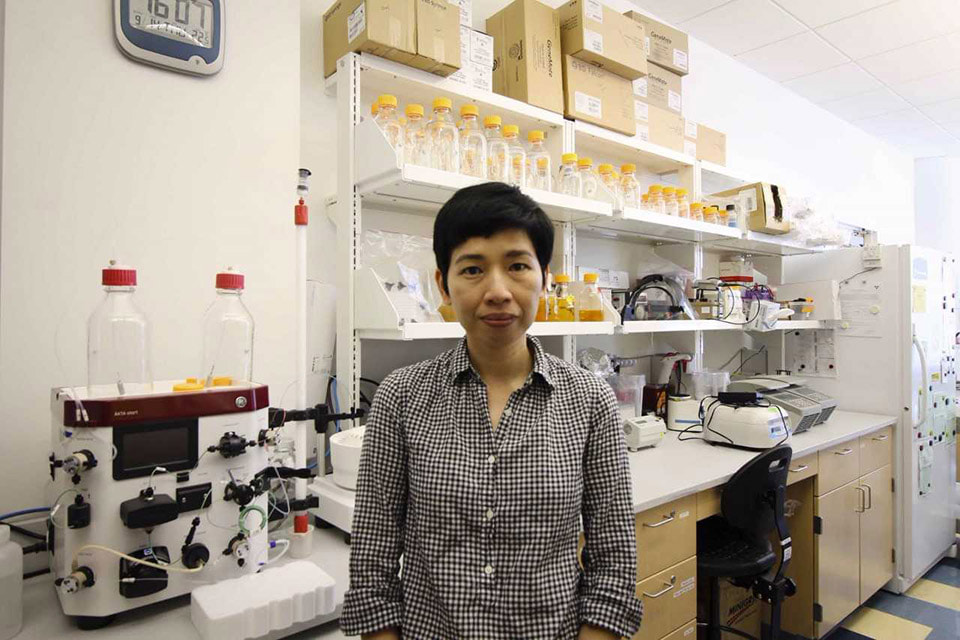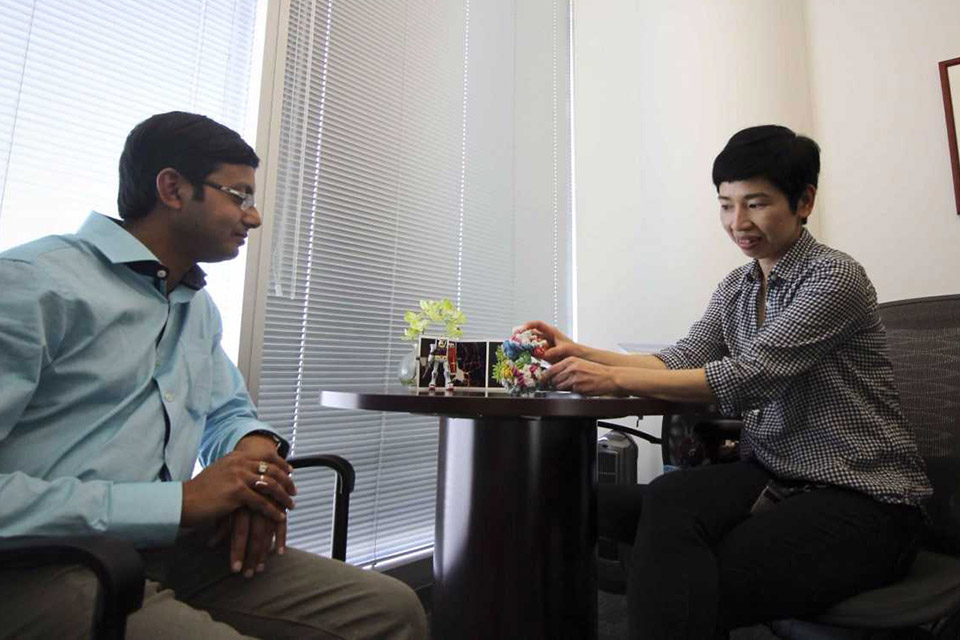SLU Scientist: Hibernating Ribosomes Help Bacteria Survive
In the second of two high-profile articles published in recent weeks, Saint Louis University scientist Mee-Ngan F. Yap, Ph.D., in collaboration with the laboratories of 2009 Nobel laureate in chemistry Ada Yonath at the Weizmann Institute of Science and Alexey Amunts at Stockholm University, describe in Nature Communications new information about the structure of Staphylococcus aureus (or Staph) hibernating 100S ribosomes, uncovering secrets of how they turn off protein biosynthesis to conserve energy and survive under stressful conditions.
Ribosomes translate genetic code into proteins. However, protein synthesis consumes
a lot of energy, and under stressful conditions, such as limited nutrient access,
antibiotic stress or host colonization, some cells can suppress the translation process
to conserve energy and help survival. In bacteria, ribosomes do this by switching
to an inactive form called hibernating 100S ribosome.
The 100S complex – conjoined twins of 70S complexes – was first identified in bacteria
over 50 years ago. Staph’s cousin, the Escherichia coli (E. coli) bacteria, tends to form the inactive 100S structure when nutritional resources
are scarce and returns to the active 70S structure within minutes after fresh nutrient
sources appear. Gram-positive bacteria like Staph, on the other hand, contain 100S
structures constantly, even when nutrients are plentiful.
Yap, who is assistant professor of biochemistry and molecular biology at Saint Louis
University, says that the difference between the way the two bacteria hibernate is
unexpected and suggests that Staph and other Gram-positive bacteria form their hibernating,
100S complexes in a species-specific way.
“In E. coli, two protein factors, RMF and HPF, are needed to enter the inactive phase,” Yap said. “But only one protein, HPF, is needed for Staph.
"E. coli RMF and HPF bring the two 70S together by transforming the shape of 70S complexes
into two compatible puzzle pieces without direct contact of the two protein factors.
In contrast, the Staph HPF staples the two 70S by direct attachment of two copies
of HPF. As a result, the E. coli 100S ribosome is connected “head-to-head” while the
Staph 100S ribosome is operated “side-by-side.”
“The distinct shape of 100S ribosomes seems to be species-specific. When we knock
the HPF out and eliminate it in Staph, they cannot survive as well and they are less
infectious.”
By hampering the formation of Staph’s hibernation phase, scientists may be able to
discover a unique Gram-positive-specific anti-bacterial treatment.
“In the long run, we may be able to target Staph or other Gram-positive bacteria
with this species-specific approach,” Yap said. “This may make it a good drug target.”
Building on this work and recent findings published in Proceedings of the National Academy of Sciences (PNAS), and with the support of a new five-year $1.59 million grant from the National Institutes
of Health, Yap will continue to explore these questions and others that surround hibernating
ribosomes’ role in cell survival.
Read about Yap’s recent findings published in PNAS.
Other researchers on the study include Donna Matzov, Shintaro Aibara, Arnab Basu, Ella Zimmerman, Anat Bashan, Alexey Amunts and Ada E. Yonath.
The study was funded in part by the PEW Charitable Trusts, the Edward Mallinckrodt
Jr. Foundation, and the National Institutes of Health (grant number GM121359.) The
Nature Communications article doi is: 10.1038/s41467-017-00753-8.
Saint Louis University School of Medicine
Established in 1836, Saint Louis University School of Medicine has the distinction
of awarding the first medical degree west of the Mississippi River. The school educates
physicians and biomedical scientists, conducts medical research, and provides health
care on a local, national and international level. Research at the school seeks new
cures and treatments in five key areas: cancer, liver disease, heart/lung disease,
aging and brain disease, and infectious diseases.



















